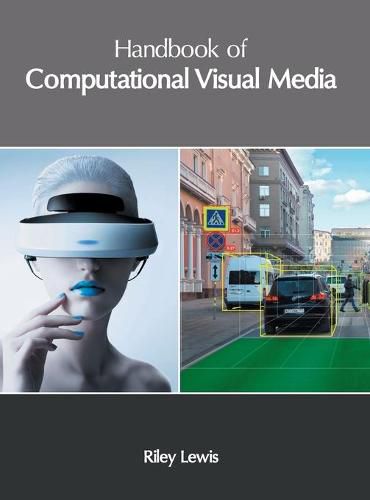Readings Newsletter
Become a Readings Member to make your shopping experience even easier.
Sign in or sign up for free!
You’re not far away from qualifying for FREE standard shipping within Australia
You’ve qualified for FREE standard shipping within Australia
The cart is loading…






This title is printed to order. This book may have been self-published. If so, we cannot guarantee the quality of the content. In the main most books will have gone through the editing process however some may not. We therefore suggest that you be aware of this before ordering this book. If in doubt check either the author or publisher’s details as we are unable to accept any returns unless they are faulty. Please contact us if you have any questions.
In the digital age, there is a variety of large-scale visual data available on the Internet. This presents opportunities for the novel processing of visual information that can have commercial advantages. It can be accomplished if this data can be understood, systematically managed, processed and utilized. An interdisciplinary field of science called computer vision deals with enabling computers to gain an understanding of digital images and videos. Its objective is to automate tasks that only the human visual system can achieve. Some of the core tasks of computer vision are acquiring, processing, understanding and analyzing digital images, and extracting high-dimensional data for producing numerical or symbolic information. Image understanding can be thought of as the disentangling of symbolic information from image data with the aid of geometry, learning theory, physics and statistics. The applications of computer vision are varied. It is used for automatic inspection such as in manufacturing applications, computer-human interaction, navigation, assisting humans in identification tasks, etc. Computer vision is an upcoming field of science that has undergone rapid development over the past few decades. Most of the topics introduced in this book cover new techniques and the applications of visual information in computer vision. It is a vital tool for all researching or studying computational visual media as it gives incredible insights into emerging trends and concepts.
$9.00 standard shipping within Australia
FREE standard shipping within Australia for orders over $100.00
Express & International shipping calculated at checkout
This title is printed to order. This book may have been self-published. If so, we cannot guarantee the quality of the content. In the main most books will have gone through the editing process however some may not. We therefore suggest that you be aware of this before ordering this book. If in doubt check either the author or publisher’s details as we are unable to accept any returns unless they are faulty. Please contact us if you have any questions.
In the digital age, there is a variety of large-scale visual data available on the Internet. This presents opportunities for the novel processing of visual information that can have commercial advantages. It can be accomplished if this data can be understood, systematically managed, processed and utilized. An interdisciplinary field of science called computer vision deals with enabling computers to gain an understanding of digital images and videos. Its objective is to automate tasks that only the human visual system can achieve. Some of the core tasks of computer vision are acquiring, processing, understanding and analyzing digital images, and extracting high-dimensional data for producing numerical or symbolic information. Image understanding can be thought of as the disentangling of symbolic information from image data with the aid of geometry, learning theory, physics and statistics. The applications of computer vision are varied. It is used for automatic inspection such as in manufacturing applications, computer-human interaction, navigation, assisting humans in identification tasks, etc. Computer vision is an upcoming field of science that has undergone rapid development over the past few decades. Most of the topics introduced in this book cover new techniques and the applications of visual information in computer vision. It is a vital tool for all researching or studying computational visual media as it gives incredible insights into emerging trends and concepts.